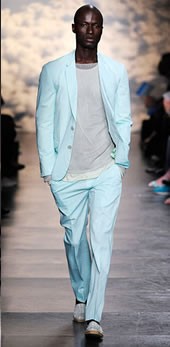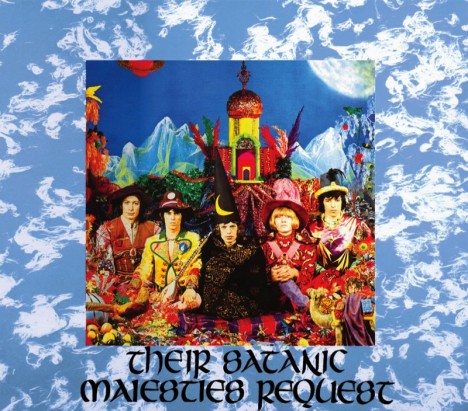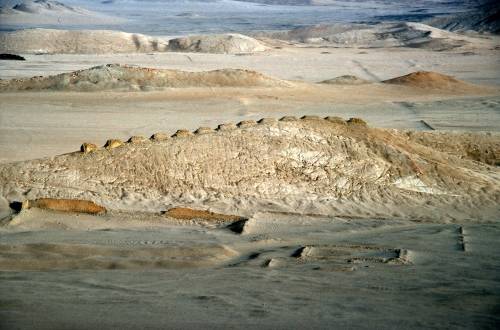New York, 31 December 2012
A few weeks ago, I was watching a French TV show in Beijing called Nicolas Le Floch. This is a detective series set in France in the late 1700’s. It’s really quite amusing to see the detective genre unfolding in such an incongruous setting. But actually I mention the show for an altogether different reason: as I followed the tortuous plot, I was struck en route by how colourful the men’s clothes were in that period, as this still from one of the shows attests
Just to make the point, I throw in a few photos of portrait paintings from the period:
And to top it all, in France at least the men wore make-up! This still is of Le Floch’s boss, the chief of police:
Quite a change from Inspector Japp of the Poirot series …
This blaze of bright men’s clothing made me reflect on the dullness of my own wardrobe. All my official clothes – those I wear for work – are of subdued colouration: grey or discrete browns, greens and dark blues. The vast majority of my shirts are white, with one or two blue ones. The only way I can exhibit my love of colour in an official setting is through my ties, of which I have collected a large assortment over my career. Even the clothes I wear in my private life are modest in their colouration; I can boast of a few brightly coloured T-shirts and that’s it.
I merely reflect the sartorial conventions of our times. Today’s serious men do not wear colours, as these pictures of the powerful bear out.
The new Chinese leadership (although note the discrete dash of colour in the ties):
A lineup of the G8:
A lineup of the EU heads of state:
Why this greyness, this dullness, this soberness? I am no historian of fashion, but I am sure that the answer lies in this: serious men, the thinking goes, do not wear colours. Brightly coloured clothes denote ditziness, frivolity and general silliness. A man in brightly coloured clothes cannot possibly balance a budget or write a piece of legislation or do any of those other serious things required of him. I mean, can you imagine these men running a company or a government? Please!
The only time I can think of in my lifetime when men went around in clothes vaguely resembling those of the eighteenth century was the 1960s when flower power burst upon the scene:
These two suits come from the Victoria and Albert’s collections:
But the people who wore these clothes were completely unserious people, people who were into drugs, sex, and rock and roll, as the album covers of the time amply demonstrate:
So I suppose in my lifetime, if I want to be taken seriously, which I do, I will be condemned to wearing dull coloured clothes, with only a dash of colour in my ties. I will, paraphrasing Cyril Connolly’s famous phrase, be a colourful man imprisoned in a grey man, wildly signalling to be let out.
___________________
Floch colourful clothes: http://images.allocine.fr/r_640_600/b_1_d6d6d6/medias/nmedia/18/81/96/02/19955662.JPG
18thC-1: http://i47.tinypic.com/2j4tvl0.jpg
18thC-2: http://i47.tinypic.com/mwz14n.jpg
18thC-3: http://i48.tinypic.com/atp6l2.jpg
18thC-4: http://i50.tinypic.com/e6q1d1.jpg
Floch made-up face: http://cdn.static.ovimg.com/episode/3270971.jpg
Inspector Japp: http://ic.pics.livejournal.com/phantomphan1990/11963571/118817/118817_original.gif
Politburo: http://l2.yimg.com/bt/api/res/1.2/afKIpJHhH4TpWmLewt8S6A–/YXBwaWQ9eW5ld3M7Zmk9aW5zZXQ7aD0xMDI0O3E9Nzk7dz0xNjYw/http://media.zenfs.com/en_us/News/Reuters/2012-11-15T044703Z_283609896_GM1E8BF0ZB101_RTRMADP_3_CHINA-CONGRESS.JPG
G8: http://www.google.com/imgres?q=G8+photo&hl=en&tbo=d&biw=1280&bih=683&tbm=isch&tbnid=SPoOXwx3iorBWM:&imgrefurl=http://www.g8italia2009.it/G8/Home/Media/Foto/G8-G8_Layout_locale-1199882116809_1246708086733.htm&docid=_9F5adpgS1UWjM&imgurl=http://www.g8italia2009.it/static/G8_Foto/_MB24968.jpg&w=3000&h=1870&ei=z1rgUM6-LNO40AHFtIC4Ag&zoom=1&iact=hc&vpx=161&vpy=295&dur=8059&hovh=177&hovw=284&tx=173&ty=111&sig=109352013111727269517&page=1&tbnh=141&tbnw=215&start=0&ndsp=24&ved=1t:429,r:7,s:0,i:108
EU: http://i.dailymail.co.uk/i/pix/2012/05/24/article-2149193-13413A49000005DC-413_634x252.jpg
Red suit: http://kontraplan.com/site/wp-content/uploads/2012/04/Lanvin-Mens-SS12-Collection-kontraPLAN-magazine-6.jpg
Light blue suit: http://www.thestyleking.com/wp-content/uploads/2011/07/Coloured-Suits.jpg
Indian colourful jacket: http://timesofindia.indiatimes.com/photo/10019988.cms
Coloured clothes: http://4.bp.blogspot.com/-QuyZgxyFQ70/T-xNoZ-tloI/AAAAAAABK3M/5orvLpQt_0o/s1600/Milan+Mens+Fashion+Week+Salvatore+Ferragamo+Spring:Summer+2013+Runway+Show_0143.JPG
Carnaby street-1: http://media.vam.ac.uk/media/website/uploads/images/2006BE8980_carnaby_street.jpg
Carnaby street-2: http://farm3.staticflickr.com/2082/2128638387_ae4fb5b36a_z.jpg?zz=1
Sixties suit VA-2: http://media.vam.ac.uk/media/thira/collection_images/2006AW/2006AW4489_jpg_ds.jpg
Sixties suit VA-4: http://media.vam.ac.uk/media/thira/collection_images/2006AB/2006AB6007_jpg_ds.jpg
Sgt Pepper album cover: http://greatalbumcovers.files.wordpress.com/2012/02/album-covers-bealtes-1.jpg
Yellow submarine album cover: http://3.bp.blogspot.com/-YgGhq-2XQ8E/T9kztOsJPwI/AAAAAAAAC4k/VeHN6M72Tqg/s1600/The+Beatles+-+Yellow+Submarine.jpg
Rolling stones: http://pokingsmot.net/wp-content/uploads/2012/02/The-Rolling-Stones-Their-Satanic-Majesties-Request-Album-Art-468×411.jpg
Jimi Hendrix: http://www.rockstargallery.net/wp-content/uploads/2011/12/Hendrix-AYE-Front-Cover.jpg
Pink Floyd: http://upload.wikimedia.org/wikipedia/en/3/3c/PinkFloyd-album-piperatthegatesofdawn_300.jpg



























































